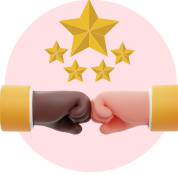Welcome! We're about to dive into the thought-provoking Module of "Legal and Ethical Considerations as a Scientific Illustrator." As we tackle the complex landscape of ethics and legality in your artistic journey, keep in mind your "Roadmap to Success."

Remember, the roadmap isn't a distant memory; it's your steadfast companion as you navigate through each chapter. As we tackle the landscape of ethics and legality in your artistic journey, keep in mind that every choice you make – from sharing your work to collaborating with others – adds a brushstroke to the canvas of your digital presence.
As you ponder over copyright issues, permissions, and other ethical themes, remember that each decision is a reflection of your values, integrity, and your commitment. With each ethical choice, you're not just adhering to legal norms; you're crafting a narrative that speaks to your authenticity and dedication.
And now it's time to unravel the ins and outs of copyright laws that play a pivotal role in your artistic endeavors.
What's Copyright Anyway?
Copyright, in simple terms, is like a protective shield for your creative work. It gives you, the creator, exclusive rights to control how your masterpiece is used, shared, and distributed. This means that your beautifully crafted scientific illustrations fall under this copyright umbrella too!

Copyright and Your Scientific Illustrations
Imagine you've meticulously crafted a stunning illustration of a delicate cell structure or a mesmerizing galaxy. As a scientific illustrator, you automatically own the copyright to your creation once it's fixed in a tangible form - whether that's a digital file, a print, or even a canvas.
Your Rights as a Copyright Holder
With that copyright badge proudly pinned to your artistic chest, you gain a bunch of rights, such as:
1. Reproduction: You get to decide who can make copies of your work.
2. Distribution: You call the shots on how your illustration gets distributed, sold, or shared.
3. Derivative Works: You have the power to decide if others can build upon your illustration or create something new based on it.

4. Public Display: You get to decide where and when your work is displayed publicly.
5. Performance: If your illustration is animated or interactive, you control when and where it can be performed.
Protecting Your Creative Treasure
Now, let's talk about safeguarding your artistic gems:

1. Copyright Notice: Consider adding a copyright notice on your illustrations. This is a simple way to let the world know that you own the rights to your work.
Example: © [Your Name] [Year Created]
2. Registration: While copyright protection is automatic, registering your work with the copyright office offers extra layers of legal protection. It makes it easier to take legal action if someone tries to misuse your work.
3. Licensing: Want to share your artwork with the world while retaining control? Licensing is your best friend. You can grant specific permissions to others for using your work in exchange for some moolah or other benefits.
Navigating Fair Use
Ah, "fair use" - the gray area of copyright law. Sometimes, people can use your work without your explicit permission under the fair use doctrine. This usually applies for educational, commentary, or parody purposes. Keep an eye out for instances where your work might be used under this exception.
Going Global: International Copyright
Remember, copyright laws vary from country to country. If your work is being shared globally, take a moment to explore the copyright regulations in the regions your masterpiece is reaching.
Wrapping It Up
In the vast canvas of scientific illustration, copyright is your artistic shield. It's your paintbrush to control how your work is experienced by the world. Embrace it, protect it, and use it to your advantage!
Navigating Intellectual Property Rights
As A Scientific Illustrator
You know that feeling when you pour your heart and soul into an intricate illustration, bringing scientific wonders to life? Well, let's chat about how intellectual property (IP) rights come into play and why they matter for your fantastic creations.
What's All This Hubbub About Intellectual Property?
Alright, picture this: Your brainchild of an illustration isn't just a pretty picture; it's also a product of your ideas, creativity, and hard work. Intellectual property covers all that good stuff and more. It's the legal framework that gives you ownership and control over the brilliant results of your artistic genius.
Types of Intellectual Property Rights
Now, let's break down the different flavors of IP rights:
1. Copyright: This is your go-to buddy for protecting your artistic expressions, like drawings, paintings, and digital creations. It's all about that "I made this!" stamp on your work.
2. Trademarks: When you've got a unique logo, name, or symbol that represents your brand as a scientific illustrator, trademarks are your pals. They prevent others from copying or using your distinctive brand identity.

3. Patents: While not as common in scientific illustration, patents are like the superhero capes for inventions. They safeguard new, useful, and non-obvious creations.
4. Trade Secrets: These are like secret recipes, but for your creative process. It's all about keeping your special techniques and methods hush-hush.
Intellectual Property and
Your Artistic Masterpieces
Now, how does this IP jazz relate to your breathtaking scientific illustrations?

Copyright Your Marvelous Creations
As a scientific illustrator, your intricate drawings are born with an invisible copyright cloak. The moment you put your ideas onto paper or screen, you're the proud owner of that masterpiece! You can decide how it's used, shared, and enjoyed by others.
Licensing: Your Art, Your Rules
Want to spread your genius while keeping control? Licensing is your enchanted spell. You can grant specific permissions to others, like letting a science textbook feature your work. They get to use it, and you get your dues. Win-win!
Safeguarding Your Treasures
Here's a magical trio of ways to shield your artistic gems:
Document Everything: Keep a trail of your creative journey - sketches, drafts, the works! It's like a magical spellbook of your creative process.
Register Your Copyright: While not mandatory, registering your work gives it extra armor. It's like casting a protection spell that makes legal battles easier if someone tries to play foul.
Create Your Magic Contract: If you're collaborating with others, whether it's scientists or publishers, whip up a contract that outlines who owns what and how your illustrations will be used. It's like sealing a pact with your artistic allies.
Conclusion: You're the Maestro of Your IP Symphony
In the enchanting realm of scientific illustration, intellectual property rights are your magical wand. They let you orchestrate how your imaginative visions unfold and dance across the world. So, embrace your IP powers, keep creating wonders, and remember - your genius deserves its spotlight! 🌟🎨
Who's the Boss? Ownership of Scientific Illustrations for Client Projects
Picture this: You, the creative genius, teaming up with a client to weave artistic magic into a scientific project. But wait, who's going to own that breathtaking illustration you're conjuring up? Let's dive into this collaborative adventure and find out!
Setting the Stage: The Client-Scientific Illustrator Duo
Imagine you're crafting a stunning illustration for a client's research paper or a science-themed website. You're not just creating a masterpiece; you're also infusing your creativity into their project, like a creative superhero swooping in.
The Ownership Dance
When it comes to ownership, the rules aren't set in stone; they're more like a collaborative dance. Usually, the ownership tango follows these steps:
1. Work for Hire: If you and your client agree on a "work for hire" arrangement, it's like a musical duet. Your client takes the spotlight here. They own the illustration, just like the lead dancer owning the dance moves. But fret not! You still get your well-deserved recognition as the mastermind behind the brushstrokes.

1. Work for Hire: If you and your client agree on a "work for hire" arrangement, it's like a musical duet. Your client takes the spotlight here. They own the illustration, just like the lead dancer owning the dance moves. But fret not! You still get your well-deserved recognition as the mastermind behind the brushstrokes.
2. Rights Transfer: In some cases, your client might want to own the illustration outright. Think of it as handing over the magical wand. They become the proud owners, and you graciously pass on the artistic torch.
3. License Magic: Sometimes, it's not about giving away the keys to the kingdom. You can grant your client a license to use your masterpiece while retaining your ownership. It's like lending a friend your enchanted book while still keeping it on your shelf.
The Contract
To ensure harmony in this creative waltz, a contract is your trusty spellbook. It's where you jot down who owns what, how the illustration will be used, and the details of your artistic collaboration. Think of it as the map that guides your shared journey.
Your Artistic Aura
Remember, each project might have its unique rhythm. Sometimes, the client might be the star, and other times, you're the shining sun. It all boils down to communication, understanding, and crafting an arrangement that resonates with both sides.
Wrapping Up: Dance to Your Own Tune
So, there you have it, fellow illustrators! The ownership waltz in client projects is a dynamic melody where both sides find their groove. Whether it's a masterpiece crafted under the client's banner or a harmonious licensing arrangement, your artistic aura shines through, enriching the scientific tapestry.
Navigating The Art Of Protecting
Intellectual Property
Here's the scoop: we've covered how to guard your artistic gems and share them with clients. Now, let's explore the guidebook to gracefully glide through your career, treating others and your craft with care. So, buckle up, because the adventure continues! 🎨🚀
The Dance of Respect
Now, let's explore how to gracefully pirouette through the world of respecting others' intellectual property:

1. The Power of Permission: Just like you'd ask before borrowing someone's wand, seek permission before using someone else's work. Whether it's a fellow illustrator's piece or an image from a scientific journal, always ask and give credit where it's due.
2. Fair Use Flourish: The "fair use" doctrine isn't just for textbooks. It's like a magical portal that lets you use a snippet of someone else's work, but tread carefully. It's meant for educational, commentary, and transformative purposes.
3. Public Domain Portals: Some treasures are free for all! Explore the realms of public domain - works where copyright has expired or never existed. It's like finding a treasure chest of creativity waiting for your touch.
4. Inspiration Without Imitation: It's totally okay to be inspired by others' work. Think of it as sharing a magical spell you've learned with your own unique twist. But steer clear of turning that inspiration into a direct copy.
Creativity and Respect
Remember, as a scientific illustrator, you're both the creator and the protector. So, whether you're creating your own artistry or admiring the creations of fellow creators, always let creativity and respect dance hand in hand. 🌌🎨📜
